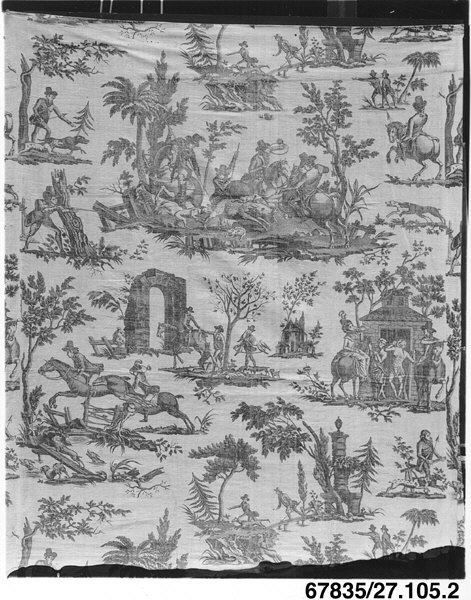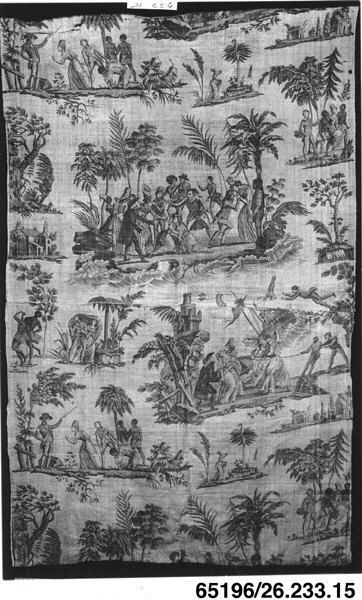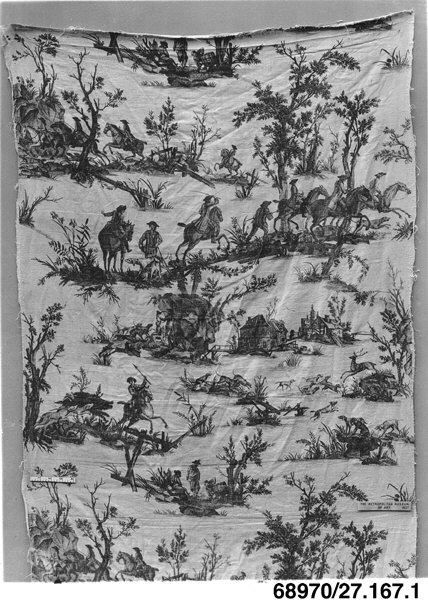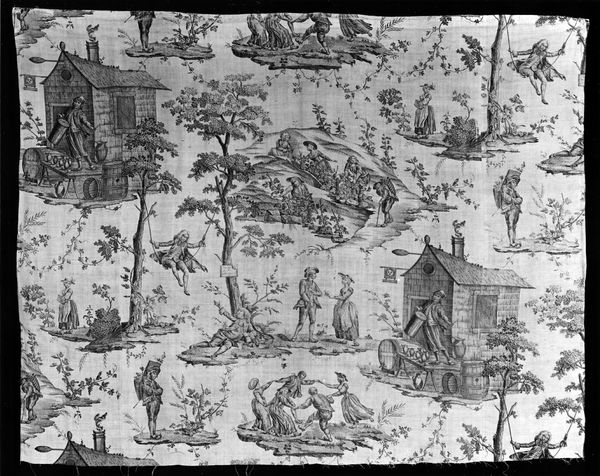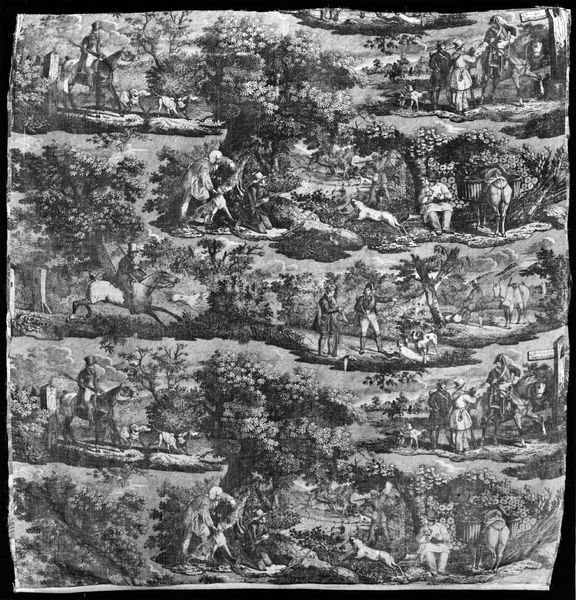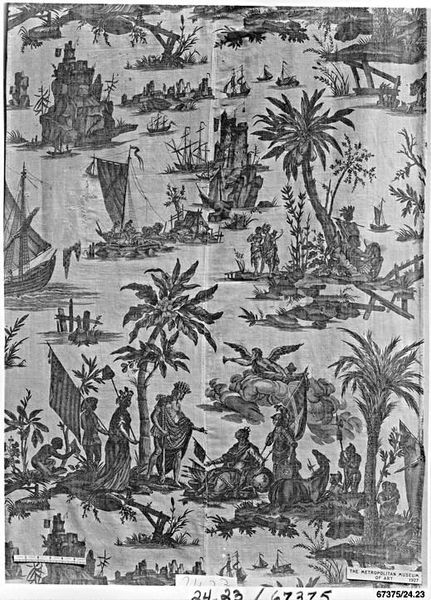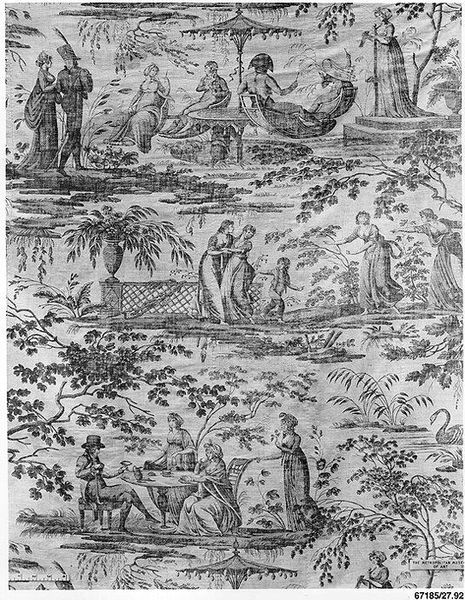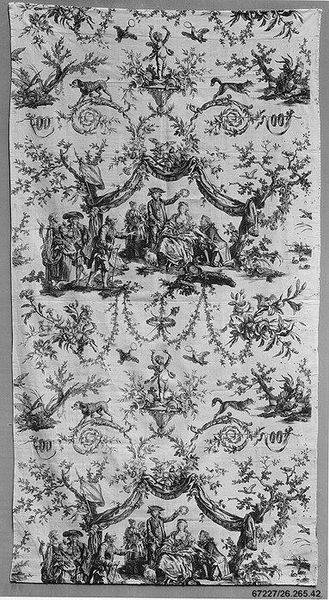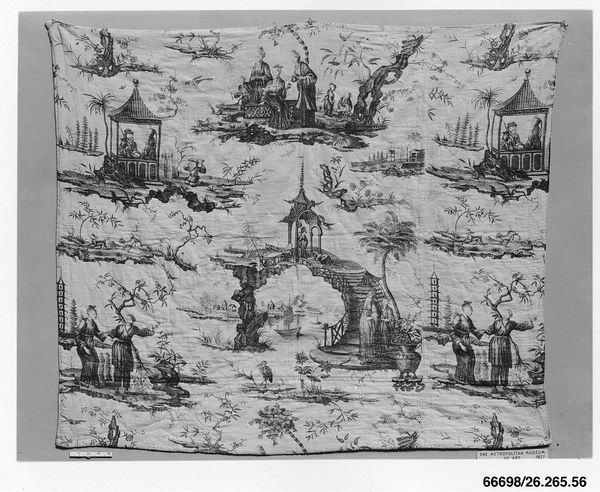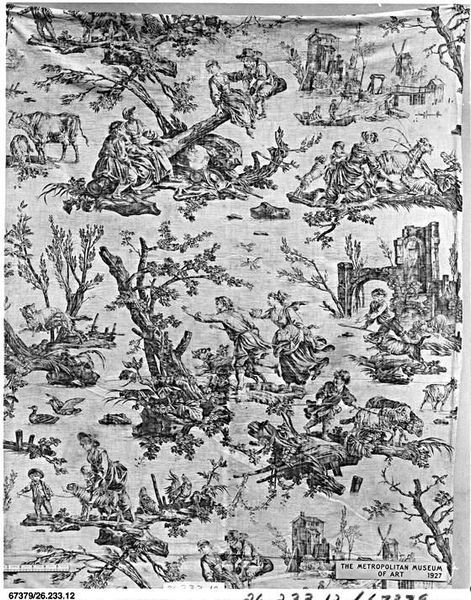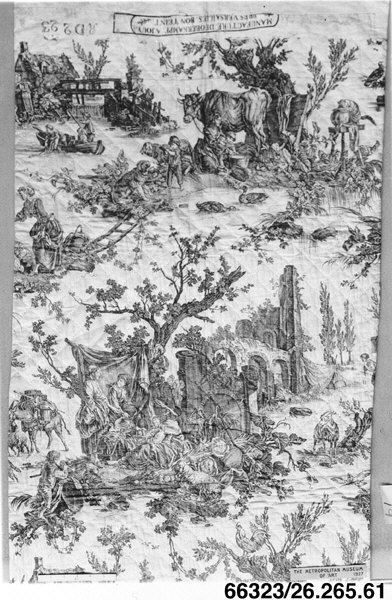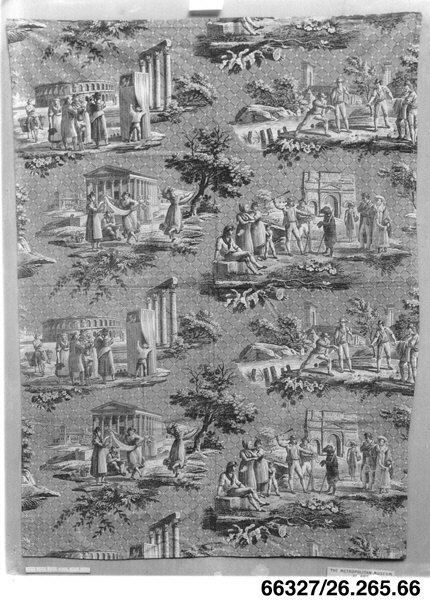
Dimensions: L. 34 x W. 40 1/2 inches 86.4 x 102.9 cm
Copyright: Public Domain
Curator: My first impression is, well, it’s incredibly…busy. Like trying to follow a hundred conversations at once. Editor: In front of us hangs “The Tuileries Gardens,” a textile crafted between 1780 and 1790 by the Oberkampf Manufactory. It resides here at The Metropolitan Museum of Art, a captivating sample of rococo design. Curator: Rococo, right! Hence the flirtatious atmosphere and all those delicate details. To my eye, it feels very performative, all these little social vignettes carefully posed. Like everyone's intensely aware they are being watched, or perhaps made into art. Editor: I am particularly interested in how the image repeats itself, in a way reminiscent of cultural memory. We revisit archetypal scenarios, social customs, or values reflected from one repeat to the next. It’s a very literal and deliberate encoding of a moment. Curator: Hmmm, so you’re saying it's less a spontaneous scene and more of a deliberate statement about what they wanted that time to look like? Interesting! Editor: Precisely. Each pastoral scene echoes a certain idyllic lifestyle of leisure and romance. Water features, sculptures, and stylish figures create a scene reminiscent of a stage play or a meticulously framed photograph meant for an album. Curator: Thinking of photographs makes me consider the lack of color. The world felt much more monochrome then; it brings out form and composition in a totally different way. Like everything is set for an etching or engraving. Editor: Yes, the monochromatic nature directs our attention to line and form, evoking an idealized era frozen in aesthetic appreciation. Every repetition in that frame evokes the concept of societal legacy and continuity, as they understood it then. Curator: Looking at it again, now that you've outlined the patterns, the narrative, and how all this connects, I find this busy textile revealing. It gives me more than just the impression of leisure and flamboyance but some deeper questions about image and heritage. Editor: And that is why symbols speak, friend, revealing to us not just the visual of an age, but the enduring dreams—and constructions—of a society looking back.
Comments
No comments
Be the first to comment and join the conversation on the ultimate creative platform.
